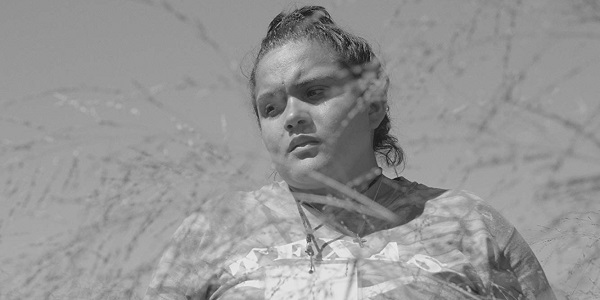This documentary about the epidemic wave of unsolved killings in Mexico draws on testimonies from countless subjects across the country – their words never leave you. Dark Suns is a highly engrossing and extremely crucial study of the unpitying response to murder, which begins with exploring the femicides in Chihuahua and unfolds into surveying the deaths of journalists and students elsewhere in the country.
Informative and non-sensationalist
Dark Suns is remarkably constructed despite the non-linear storytelling – there’s no three act structure to approaching the story the way director Julien Elie wants to and there are no clear beginnings or ends to this narrative. It’s perhaps stronger as a work of investigative reporting than cinema, which bodes well for its exhibition at the Sheffield Doc/Fest 2019, where it will be competing for the Tim Hetherington award, earned by the most outstanding film that reflects the work of the titular photojournalist – though, awards aren’t a necessary endorsement for the journalistic achievement here.

Elie is careful to not sensationalise his film with explicit images, because listening to details provided by affected individuals is distressing enough. In one heart-rending sequence, we see a mother, Silvia Banda Pedroza, going on buses around Chihuahua and handing out fans and water bottles to travelers for free, requesting that if they see her daughter, Fabiola Valenzuela Banda, who went missing seven years prior, that they contact the authorities.
She delivers her message with such sangfroid that chillingly implies it’s a script she’s used to reading. In a shrewd act of activism, she plasters the labels of her water bottles with images of several missing women. Speaking to the filmmaker, she implicates the federales as the ones responsible for many of these murdered women, relaying her daughter’s experience of being tracked by a policeman boyfriend and pointing to the rise in femicides after a profusion of agents were deployed in Chihuahua.
Unanswered questions and blind authorities
Carlos Mata, a lawyer, confirms that many of the killings were organised by a military officer. Military officers aren’t interviewed for this documentary, yet their presence is felt everywhere as they permeate the same crimes across the country. Elie keeps an eye on them by pointing his camera at them as much as he can when they’re in distance.
There’s hard-hitting quote after quote from the long list of contributors, entailing family members, lawyers, priests, journalists, etc., who together paint a shockingly vivid, highly infuriating, sorrowful picture. Gustavo de la Rosa, a human rights lawyer, speaks of the widespread violence in Juarez, saying that before 1993 you could count the cases of femicide in one hand but now everybody knows of a murder in the city. For all of them, the most prevailing question next to “where are the bodies” is “why did this happen?”
Diana Washington-Valdez, an author and journalist in El Paso, speaks of a theory that men killed women as a protest against NAFTA. These motives are impossible to conclude due to the unsolved nature of the crimes, but there are several hypotheses provided, ranging from a complicated web of cartel territory control to simply killing for sport.
All are completely disturbing, especially because of the result of thousands of missing people, further because they all happened under the nose of authorities, and then even further so because the epidemic isn’t confined to just a handful of cities.
Powerfully presented in greyscale
Shot in stark monochrome, it’s student-level analysis to suggest the black-and-white represents the bleak atmosphere pervading the narrative, but that’s exactly why it works – it’s very clearly a representation of a reality washed of its colour as injustice persists.
The muted colour palette is also effectively employed due to the novelistic structure which takes us to different regions wherein murder and disappearances have also been prevalent: by applying the same monochromatic aesthetic to all of them, the picture coheres into depicting a genuinely nationwide crisis.
Furthermore, the tones blend with the same coloured archive photography, extending the previous point to time as well as space. A heinous history, partly created by a sensationalist use of such images by the media as well as a criminal justice system indirectly kowtowing to criminals.
Dark Suns: Conclusion
At two and a half hours, the viewing experience of this horrifyingly detailed examination is both exhaustive and exhausting. But Dark Suns is utterly vital and haunting, chronicling a staggering history of crime and injustice that needs – and has long needed – urgent attention from any higher-up with a conscience. It’s often difficult to stomach, but these stories need to be told.
Amongst the unsettling moments in Elie’s film, one scene is particularly impossible to forget. A man looking for the remains of his brother excavates in the woods and unburies a shoe which contains bare tarsal bones. He turns to the cameraman and says, “This could have been my brother. But the shoes tell me this isn’t my brother. It’s just one more of the 32,000 who have disappeared… not counting the unknown number who go unreported.”
Dark Suns will be playing at Sheffield Doc/Fest 2019 on Friday 7 June at The Showroom and Sunday 9 June at The Light Cinema. To purchase tickets, click here.
Upcoming screenings and general release dates can be found here.
Does content like this matter to you?
Become a Member and support film journalism. Unlock access to all of Film Inquiry`s great articles. Join a community of like-minded readers who are passionate about cinema - get access to our private members Network, give back to independent filmmakers, and more.